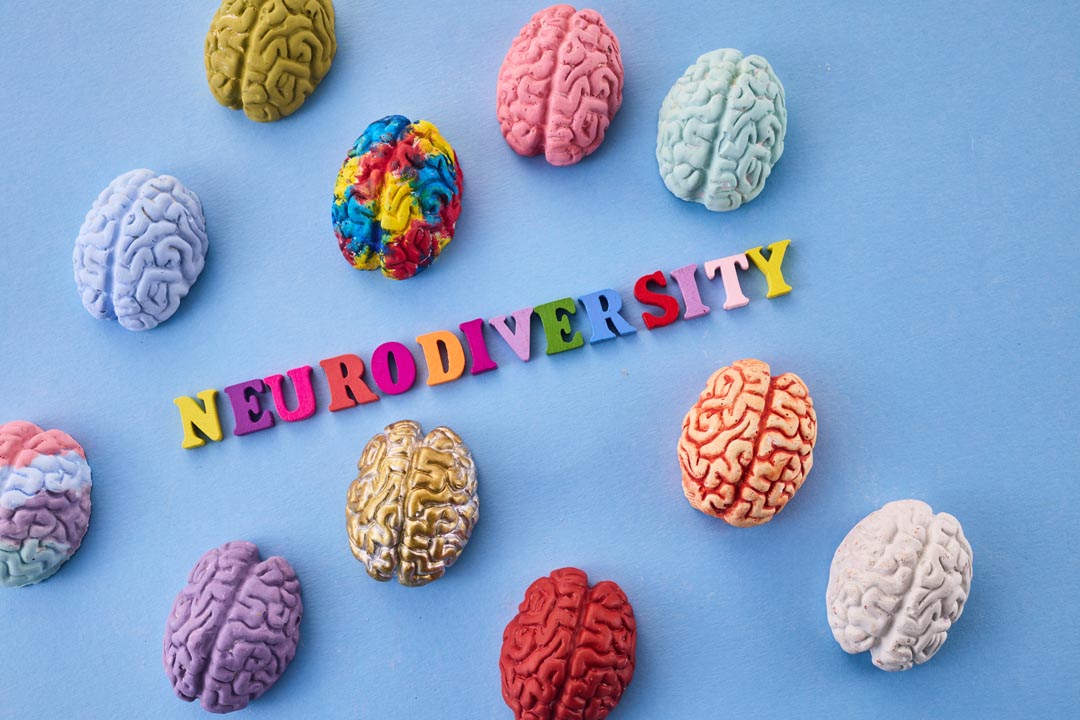In this feature, Steve Macaulay looks at the benefits and importance of neurodiverse employees
Every manager aims to make the best use of all the resources available so that their employees feel fulfilled and satisfied that they are reaching their full potential and contributing fully to the success of the organisation. However, a potential performance gap that has not been fully explored is the wide variation in the way each person approaches work and relationships and how each learns.
Fostering neurodiversity yields benefits, including increased innovation, enhanced productivity, improved problem-solving, and a positive workplace culture
More recently, the dynamic landscape of diversity and inclusion has focused on how neurodiversity is key to creating a truly inclusive workplace and one that optimises individual talents. This is supported by many businesses that have now put neurodiversity on their action list.
HR and L&D managers play a central role in championing neurodiversity and harnessing the unique strengths neurodivergent individuals bring to the organisational table. This article provides actionable insights to empower HR and L&D managers to lead the way in fostering neurodiversity within their organisations.
Defining neurodiversity
About 1 in 7 people are neurodivergent1, meaning they process information and perceive the world differently. This can be translated into millions of people and thus deserves to be taken seriously. Neurodiversity encompasses the natural variation in how individuals’ brains function, acknowledging conditions like autism, ADHD, and dyslexia.
It reframes neurodivergent traits as natural variations with inherent strengths and points towards organisations embracing differences and cultivating an environment that values the contribution of every unique person.
Benefits of neurodiversity
Fostering neurodiversity yields benefits, including increased innovation, enhanced productivity, improved problem-solving, and a positive workplace culture. HR and L&D managers can work towards tapping into this wealth of talents by championing neurodiversity within their workforce.
There needs to be a widespread understanding of different neurodivergent conditions and the strengths that often accompany them and any support needed. However, the path to get there needs energy, persistence and drawing on the experience of others.
The importance of neurodiversity policies and programmes
Creating and implementing neurodiversity policies and programmes is crucial for creating an inclusive workplace. These initiatives serve as the foundation for talent acquisition, innovation, positive teamwork, and improved customer satisfaction. By investing in neurodiversity, organisations signal a commitment to nurturing diverse talents.
HR and L&D managers should be at the forefront of establishing comprehensive neurodiversity policies. These policies should outline the commitment to inclusivity, provide guidelines for accommodating neurodivergent employees, and emphasise breaking down societal stigmas. Clear communication ensures alignment with a neurodiverse and inclusive workplace.
Revamping practices
Traditional management practices may exclude neurodivergent individuals. For example, HR managers should assess if its recruitment practices are inclusive, such as alternative interview formats and being able to assess candidates based on all their abilities. Hiring managers could consider matching job roles to individual strengths to ensure a symbiotic relationship that benefits both the employee and the organisation.
Neuromyths and misunderstandings
Neurodiversity does not mean disability; it’s a natural variation in brain function, yet employment and career development are a lot harder for neurodiverse candidates. Challenging myths and misunderstandings is vital. The Office of National Statistics shows that just 22% of autistic adults are in any kind of employment.2 HR and L&D managers can be a catalyst for dispelling inaccurate stereotypes and promoting a nuanced understanding of neurodivergent conditions.
Recognising and challenging misconceptions is where HR and L&D must be proactive. In the UK, the CIPD report on neurodiversity quotes the Office for National Statistics (ONS) data which reported that 64% of employers still admit to having ‘little’ or ‘no’ understanding of neurodiverse conditions. You may hear that neurodivergent individuals are incapable of working independently or that making accommodations is overly troublesome, costly, and best avoided. It’s essential to understand that neurodiversity is not synonymous with problems; rather, it represents a natural variation in brain function that warrants acknowledgement in both the workplace and society at large.
Unfortunately, entire groups of people are frequently subject to inaccurate stereotypes, leading to discouraging generalisations. For instance, there’s a common misconception that individuals with autism do not enjoy social interaction, or that those with ADHD are incapable of focusing. When addressing such stereotypes, a potential trap is to replace them with additional generalisations. Take autism, for example, where significant gender differences in characteristics and behaviours often exist, underscoring the need for managers to gain a deeper understanding of these conditions and what support is needed.
Tackling barriers and challenges
Some very real barriers need to be overcome and this is a short glimpse of some challenges, together with possible actions:
- Awareness and understanding
Lack of awareness and understanding among employees and even HR and L&D professionals about neurodivergent conditions can impede progress.
Action: initiate targeted awareness campaigns and training sessions to inform staff about the strengths and perspectives of neurodivergent individuals. - Stigmas and stereotypes
Prevalent societal stigmas and stereotypes hinder the acceptance of neurodivergent individuals.
Action: actively challenge and dispel myths through educational initiatives, fostering a culture of empathy and understanding. - Resistance to change
Employees and leaders may resist alterations to traditional workplace practices.
Action: communicate the benefits of neurodiversity, providing examples and success stories to illustrate its positive impact on innovation and workplace culture. - Rescoping L&D programmes
Existing L&D programmes may not explicitly and implicitly cover neurodiversity topics, leaving managers unprepared to support neurodivergent team members.
Action: HR and L&D managers should incorporate neurodiversity issues into training in existing and new programmes. - Communication barriers:
Neurodivergent individuals may face challenges in expressing their needs or concerns, leading to communication breakdowns.
Action: HR managers can facilitate open communication channels, providing training to both neurodivergent individuals and their colleagues. Encouraging a culture of transparency and regular feedback can help identify and address communication barriers where neurodivergent individuals keep quiet for fear of ridicule or discrimination. - Physical spaces
Bright lighting or noisy spaces can cause problems for some groups.
Action: address ease of working issues through onboarding and regularly through workspace questionnaires and employee surveys.
Guidance for managers
Managers play a pivotal role in the success of neurodiversity programmes, yet an Institute of Leadership report in 20203 cited half of managers were uncomfortable with employing neurodiverse people. L&D programmes deepen understanding and cultivate an inclusive mindset. Open communication channels are essential for creating an environment where neurodivergent individuals feel respected and heard. Managers must be seen to break down stereotypes and focus on the unique strengths each individual brings to the team.
Bolstering team managers’ role through L&D
L&D initiatives should equip team managers as role models, with awareness, empathy, and observational skills to support neurodivergent team members. Training programmes must foster an understanding of neurodiversity, encourage adaptive leadership styles, and emphasise flexibility. Clear expectations and feedback can help create a supportive and inclusive atmosphere.
Proactive HR and L&D involvement can help build a productive work environment which maximises every team member’s potential.
Examining case studies1 shows what can be done through innovative approaches to neurodiversity.
Case study 1: The BBC
The broadcasting giant has started to address neurodiversity barriers with an innovative awareness campaign. Utilising films and virtual reality, they creatively portray neurodivergent experiences. Interactive access films for visitors promote independent exploration. It emphasises the use of storytelling and technology to foster understanding, inclusivity, and a supportive workplace.
Case study 2: Direct Line Group
The neurodiversity journey of Direct Line Group is marked by proactive initiatives, senior support, and an holistic approach that goes beyond internal policies to impact both employees and consumers positively. The company visibly supports an open culture, awareness, and continuous learning to set a firm backdrop for fostering neurodiversity in the workplace. Its HR aims include promoting individualised people management, and recognising that its success is founded on its uniquely diverse strengths. This is reflected through its recruitment practices, paying attention to the physical work environment, and awareness-raising initiatives. It has extended its thinking to reworking consumer interactions and providing suitable solutions.
Strategic action
Embracing neurodiversity is a strategic business advantage with neurodivergent employees bring both strengths and challenges. When part of diverse and inclusive teams, they bring valuable viewpoints and fresh perspectives to business problems.
HR and L&D managers are potential leaders in taking immediate action through policy creation, training and recruitment. Revamping these will help create an inclusive and innovative workplace that celebrates diverse talents. The benefits of a neurodiverse workforce are becoming increasingly apparent. The time to act is now.
Steve Macaulay is an Associate at Cranfield Executive Development. He can be reached at: s.macaulay@cranfield.ac.uk
References
1. CIPD report Neurodiversity at Work. The case studies are taken from a valuable and comprehensive report produced by the CIPD
2. ONS. (2019). Disability and employment, UK (pp. 1–19). Office of National Statistics.
3. Workplace Neurodiversity: The Power Of Difference, Institute of Leadership & Management 2020




